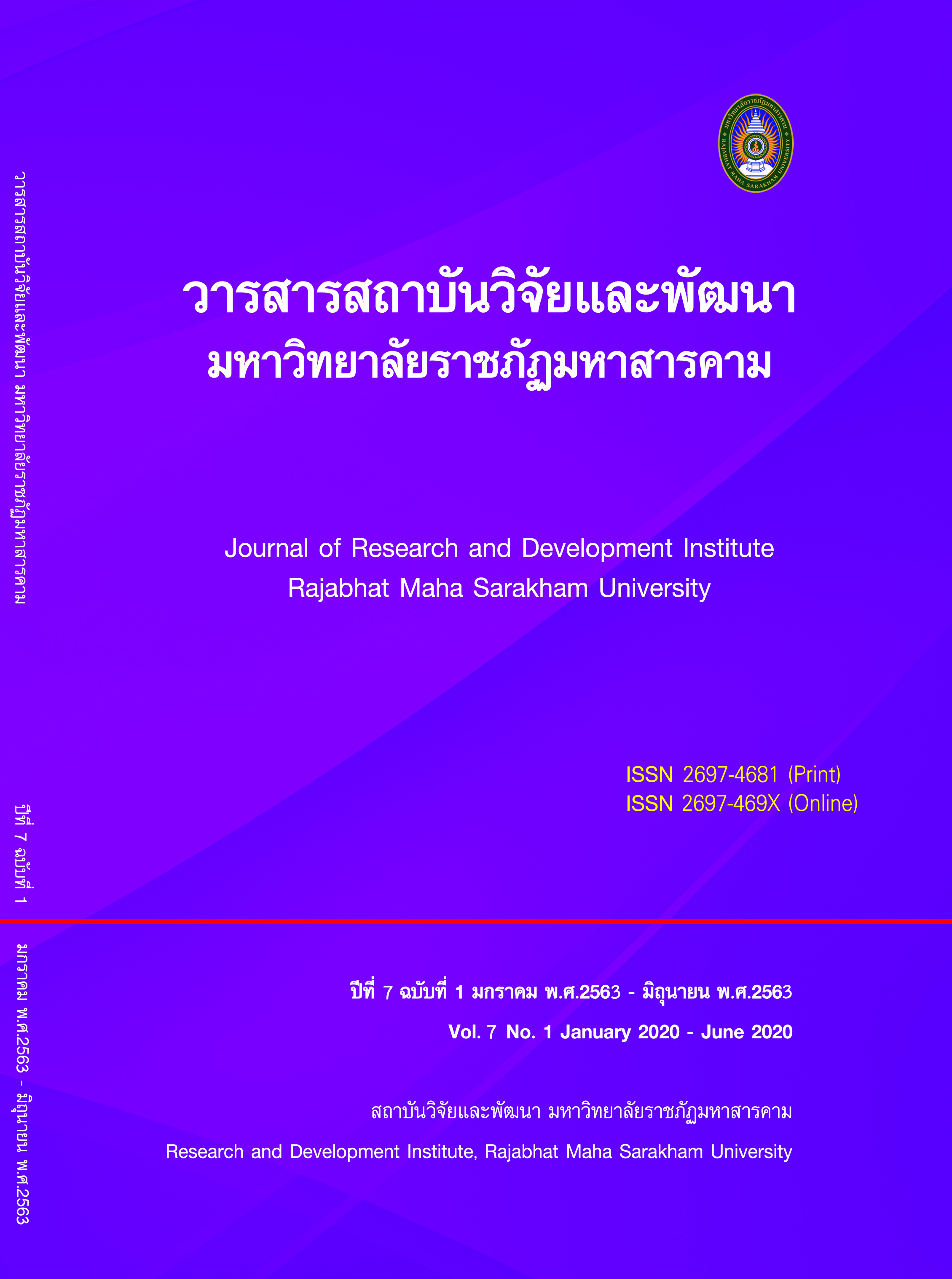EXERCISE BEHAVIOR OF THE ELDERLY CHANTABURI
Keywords:
Exercising Behavior, Senior Citizens, Factorial MANOVAAbstract
The purposes of this research are 1) to study senior citizens’ exercising behavior and 2) to compare senior citizens’ exercising behavior. The sample group consists of 394 senior citizens aging between 60-74 years old from Chanthburi. They are chosen by purposive sampling method. Research tools used are survey on exercising behavior with a reliability of 0.78. Statistics used in data analyzing are percentage, average, standard deviation, and factorial MANOVA.
The results are as follows. 1) For daily exercising routine, it is found that the majority of the sample groups prefer walking at a normal pace at 92.89%, followed by cleaning inside the house, cleaning outside the house, decoration outside the house, and physical exercises at 90.36%, 90.86%, 86.04% and 83.25% respectively. For serious exercises, it is found that speed walking is the most popular at 61.93%, followed by rhythmic activities, and cycling at 43.91% and 42.13% respectively. 2) When categorized by gender, it is found that female subjects clean the inside and outside of their houses more than male subjects with a significance level of .05. Male subjects prefer decorating outside the house, walking at a normal pace, physical exercises, speed walking, rhythmic activities, and cycling with a significance level of .05. When categorized by occupation, it is found that the subjects of all five occupations have no differences in preferred activities, except cleaning inside the house. When categorized by chronic diseases, it is found that subjects with diseases which have no effect on exercising prefer decorating outside the house more than those with diseases affecting their abilities to exercise with a significance level of .05. Those without chronic diseases prefer speed walking, rhythmic activities, and cycling more than those with chronic diseases with a significance level of .05. No differences were found in other activities. For cleaning inside the house, the researcher found an interaction between occupations and chronic diseases. It is found that retired government employees without chronic diseases prefer cleaning inside the house more than those with chronic diseases affecting their abilities to exercise with a significance level of .05. Business owners without chronic diseases prefer cleaning inside the house more than those with chronic diseases which have no effect on exercising with a significance level of .05 No differences were found in other pairs of subjects.
References
References
Chanthaburi Provincial Statistical Office. (2017). Statistical Information of Chanthaburi. Chanthaburi: Statistical Office Chanthaburi Province.
Chollada Bootwicha. (2018). Factors Associated with Exercise Behaviors of Elderly in The Health and Environment Promotion Club, Sai Mai District, Bangkok Metropolitan. Bangkok: Master of Public Health Thesis: Krirk University.
Department of Provincial Administration. (2018). Statistical data of the number of the elderly in Thailand in 2018. [Online] http://www.dop.go.th/[1 March 2018].
Krejcie, R. V., and Morgan, D. W. (1970). “Determining Sample Size for Research Activities”. Educational and Psychological Measurement. 30, 607-610.
National Statistical Office. (2015). Physical activity of the population 2015. [Online] http://www.nso.go.th/[7 April 2019].
Rudeemas Jaidee. (2016). Factors associated with exercise behavior of the elderly in the elderly club, Public Health Center 61, Sai Mai District, Bangkok. Master of Public Health Thesis : Krirk University.
Songsak Phusi-on. (2013). Application of SPSS research data analysis. 6th edition. Mahasarakham: Taksila Printing.
Suphat Sukamonson. (2010). “Result size: practical significance in the research.”. Journal of Review Language, 25, 26-38.
The Office of Health Promotion Foundation. (2014). Exercise in the elderly. Krung Phet: Health Center 6, Department of Health, Ministry of Public Health.
The World Bank. (2016). Aging society in Thailand: identifies the real health needs of the poor elderly. [Online] https://www.worldbank.org/th/ [9 เมษายน 2562].
Vilai Kuptniratsaikul. (2000). “Exercise for the Elderly”. ASEAN J Rehabil Med, 10 (2), 44-50.
Downloads
Published
How to Cite
Issue
Section
License
Articles that are published are copyrighted by the authors of the articles







